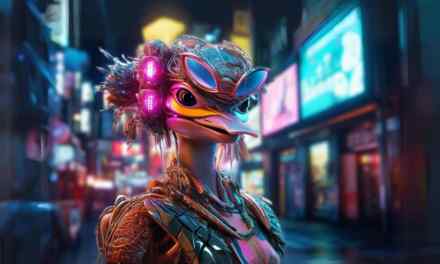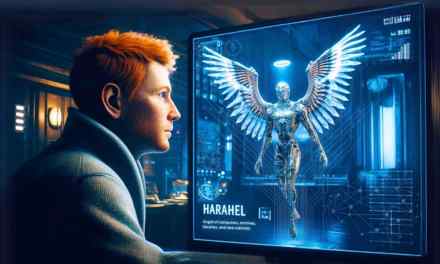“I’ve never read a line of poetry that’s beautiful,” Peter said to me once, before I left him.
Laura thought he said it just to hurt me, which probably was true. Peter was like that. He never backed down in a fight and he gave no quarter. It was why I loved him.
I’m thinking back to the time, years ago, when Peter first stopped me in front of the library. “I disagree with you.”
“That’s okay,” I said.
“There is an absolute standard for beauty. If you weren’t so afraid of offending people you’d see it too.”
I gave Laura a look. Weirdo from another planet.
She looked back (this was before she became blind). He likes you.
“Come with me to the Haidian exhibit, Emily,” he said. “I’ll show you why you are wrong.”
We never got to the Haidian exhibit. That was the day the Gossamers landed.
* * *
The piece I’m supposed to review is called “Momentum.” The attendant, a young man from the city college, lets me in. It’s February in San Jose, 70 degrees Fahrenheit.
I’m inside an old warehouse, the sort of place first occupied by the garment sweatshops, then by the hardware sweatshops, then by the software sweatshops, and then acquired by the city college when the hi-tech fever died. The air conditioning is very good; you can barely hear it.
There’s nothing on the concrete floor or the wooden walls. In the middle of the warehouse they’ve built a square enclosure the size of an office cubicle with cinder blocks. It’s dim because all the sunlight comes in from three windows along the side of the building.
The young man takes me around the enclosure, and now I see that the wall on the opposite side is made of glass. He hands me a flashlight and indicates that I should turn it on.
I move the bright circle of light around the darkness enclosed within. There are hundreds of Canadian Geese inside the enclosure, their feet glued to the floor with epoxy. When the light moves over them they flap their wings desperately and stretch out their necks, trying to lift off with the floor attached to their feet. It’s a confusing boiling sea of feathers and muscle strained beyond hope of recovery. I think the noise must be intolerable, but I don’t hear anything; the insulation is very good.
I turn off the flashlight in a hurry. I imagine the geese will still flap their wings and stretch their necks uselessly for a few more minutes before the dim light will sooth them into quieter, slower pain.
“Good momentum, isn’t it?” says the young man.
* * *
When I got up Laura had already made breakfast. The kitchen was filled with smoke. Laura was a chain-smoker, which was beyond just unhealthy since she was a dancer. First thing she did in the morning before even opening her eyes was to paw the mess on her nightstand until she found her cigarettes. She pulled hard on her cigarettes, like a condemned woman. She said that was what she felt like, condemned to lung cancer and carbon monoxide poisoning. We had a hard time finding an apartment that would let her smoke. Except for San Francisco, the whole state had been declared smoke-free for years.
She handed me the paper. “Extraterrestrials Sighted Across the World,” the headline read.
“Did you get this from across the street?” Laura sometimes liked to buy the tabloids there. We’d read them after we finished the comics, or while we waited for a date to show up.
“It’s the Examiner.”
I looked again. So it was. “Oh my God.”
The photographs showed indistinct silhouettes of cigar-shaped oblongs along the horizon. They had landed in small groups of three in two hundred thirty-six different locations across the world, distributed across the hemispheres, continents, urban and rural areas. Most of the landing locations were close, but not too close, to metropolitan centers.
The details were sketchy. No one had yet seen an alien. The ships were silent, immobile in the deserts, savannahs, abandoned airfields. All attempts at electronic communication had produced no results so far, but then again, it had only been less than thirty-six hours since the first landing.
Peter and I disagreed from the start about the ships. He called while Laura was doing the dishes.
“Have you seen?”
Peter and I were both second-year grad students. We were in a course on Aesthetics together, which was too pretentious for me but Peter loved it. I turned on the TV while answering him and remembered that he was supposed to take me to the Haidian exhibit.
“Never mind that. Do you want to go see the ships? They are out by the airport, so beautiful.”
I told him that I thought they were rather bland and unimaginative. Functional, like a penis. No, I didn’t say that.
“Emily, you need to see them up close, in the sunlight and with the open space around it. We might even catch the aliens when they leave the ships!”
It was a date.
Laura thought it was a pretty cheesy move. “He doesn’t have to spend anything. You are driving out to the airport for a first date?”
“Well, maybe I’ll be able to write something up and sell it to the Sunday magazines.”
“Hope you see some aliens then.”
In retrospect, Laura was remarkably calm. Most people are when something happens that will change everything.
* * *
The young man takes a picture of me as I turn off the flashlight. The Polaroid fades in to show me with my mouth twisted in a grim, determined look of dull surprise, as if I were trying not to throw up. He pastes the photo into an album of photographs of other visitors before me.
“This is the other part of the exhibit.”
I look through the pictures. Most people have the same look of stupid surprise. A few have expressions of outrage or horror. A few are grinning. In one, a woman is trying to shield the eyes of her daughter from the geese, unsuccessfully, so you can see the curiosity on the child’s face.
“The momentum goes from the observed to the observer. It’s the conservation of energy.” The young man hands me a pamphlet summarizing the piece.
“When will you be done?”
“Probably in a few weeks.”
He’s disappointed. That seems too long. But he’s deferential towards me. I have a lot of power. The Gossamers trust my judgment. I finally realize that he’s not just the attendant; he’s the artist.
“So, did you like it?” he can’t resist asking. He has to know. He probably holds an MBA and there’s a business plan behind the piece; the venture capitalists who gave the money for the geese (surely a fresh batch would be needed every few days), the warehouse, the publicity campaigns, the lunches and dinners with the editors at the Review to get me to come out here are probably breathing down his neck for some hope of return for their investment. He has to know.
“I don’t know yet.”
* * *
We stretched our necks and stood on tiptoe, trying to look over the crowd around the airfield. A police line about a hundred meters from the airstrips stopped us. The crowd surged, held in check by that flimsy piece of plastic.
“That’s a great deal of energy in reserve,” Peter observed. We stood a little ways back on a small dirt mound.
The ships gave off a dark metallic blue sheen in the sun. They dwarfed the 747s beside them. There were three ships, all identical, with no external protrusions or indentations to mar the smooth cigar shape. I couldn’t tell if there were any wheels or landing struts. I had the absurd wish that the ships would start rolling on their sides with the next breeze, frolicking in the sun like children in April.
“Perfect geometry,” Peter said.
“Ummm.”
“No one will ever write a poem with that kind of perfect geometry.”
“Probably no one will,” I answered, watching the ships not rolling away with the next breeze.
This was his way of courting me? I was a poet, or thought I was. I had had a few poems published in prestigious journals by then, and I was freelancing for the weekend journals to pay the bills. In the evenings I took classes that I thought would make me a better poet. I was twenty-five, what did I know?
The evening before we had argued in class about the purity of different forms of art.
“Music.”
“Not pure. It’s all based on the human auditory system, which is specialized for language.”
Peter believed in absolute standards of art, which he thought would enthrall an amoeba as much as a man. He also believed that no human art so far approached those standards.
“Painting.”
“Not pure. It’s all based on the human eye, which is specialized for frequencies and intensities useful on the savannah.”
“Sculpture.”
And on and on. Poetry he denounced as the most human and therefore most relative of the arts. It couldn’t even be translated from one human language to another. What good was it to an amoeba?
The whole class was up in arms against him. He defended himself with a glee that bordered on insanity.
And he had asked me out. Me, a scribbler of poems.
When it happened we almost missed it. One minute there was nothing but the ships in the distance. The next the air above the ships was filled with the shimmering rainbows of flickering wings.
They were about the size of a grown person’s forearm. The bodies were divided into four segments; the second and third segments each had a pair of wings. It wasn’t obvious which end was the head at first because as they flew, the bodies slowly rotated, parallel to the ground. They resembled helicopters with two rotors. Later on that impression would turn out to be more accurate than I had thought. They flew by rotating their four wings overhead, much as you and I would rotate our arms or legs to tread water. Like bumblebees, you wouldn’t think they could fly, with their bulbous bodies. At the same time, they gave the impression of floating more than flying; graceful, like blimps.
The crowd was silent as they flew closer. There were darker patches at the extremes of the two terminal segments that were probably sensing organs. They hovered close overhead. Small, centipede-like legs, the only obviously biological parts of their anatomy, rhythmically moved down their bodies, beating the air. They were so light.
The news crews were running around like crazy, trying to get a good shot. Because we were on a mound and set back from the crowd, a reporter rushed in with her mike.
“What do you think?”
Peter didn’t say anything. He was too absorbed.
“Gossamers,” I said. It was the first thing that came into my mind. For only Gossamer, my Gown–My Tippet–only Tulle–
Peter gave me a startled look. “No! That’s such a terracentric thing to say!”
“At least it isn’t anthropomorphic.”
* * *
I take the subway from the airport back to the commuter parking lot where I left my car. I like taking the subway because of the stations. When I was an undergraduate here with Laura I sometimes managed to convince her to come with me on one of those “muse-hunting trips.” We would take the subway from one end of the Green line to the other end of the Red line and then back to the other end of the Orange line. The stations had such evocative names, Orient Heights, Alewife, Prudential, Symphony, Bowdoin, which I thought would inspire me to write good poetry (Laura said it was the only way she would ever get to see the rest of Boston, from underground). And the artwork. Every station had its own theme, executed down to the last tile on the wall. Some were obvious, like the photographs of ocean life at Aquarium and the black-and-white photographs of the school’s history at MIT. Others were more fanciful. There were three-meter chimes that you could operate with an oversized handle on the wall while you waited for your train. One station had a seemingly interminable escalator on which, if you were going up, you would see clouds painted on a blue sky on the hanging vertical panels that formed the ceiling, but if you were going down, you would see a series of trains puffing steam painted on the other side. My favorite was the large bronze hand that gave leaving trains a blessing, the middle and index fingers crossed over the tunnel. Once we spent a whole afternoon looking over every tile outside one station, on which children had painted scenes of what they liked about life, and copied down those that struck us.
When we moved to California, that was the one thing I missed the most about the East, the subway stations. There is no real underground public transportation in California, the legacy of earthquakes and cars.
Years later, when I told Peter about the subway stations, I tried to make a point. Those stations to me were the height of art, better even than the Mona Lisa or Pericles. They had no institutional authority behind them, no volumes of criticism, no books of reproductions, no glass cases and armed guards. A few crazy college sophomores can come by and declare: that’s art.
“That’s not art, that’s just decoration,” Peter said.
“That’s just semantics.”
“No Gossamer would ever think so.”
“Not until I review them.” Resentment flickered between us. He was already jealous then, I think, of the power that I didn’t ask for.
We argued; then we made love. Then we got coffee. I remember liking the way the cup was shaped, with its oversized handles and the picture of cows grazing on the side. We chatted quietly and civilly about the possibility for me to work from home so he could avoid the publicity that came with my public interpretations. We sat across the table from each other, avoiding silence.
Back in my house now, I take a moment to write down my impressions of “Momentum.” I always write down what I remember about a piece only after I’ve gotten back from the airport. It allows time to filter away the inessential and leave behind those impressions that are strongest and most cohesive.
Feathers, pain, yearning, primitiveness, blood, concentration camp, objectification, death to bourgeois values, feathers, how will they clean it up, darkness, blindness, light, palpitations of the heart, feathers, heat, closeness of bodies, death, sound and fury, feathers.
They will like it because of the feathers, I think. The light drifting snow of feathers in that souvenir glass box, the energy pent-up and released into useless blasts of air to keep the feathers floating, calmness above the fury below, these are the kind of things the Gossamers appreciate. The young man and his investors will be the next big thing and spawn thousands of imitators. If I were a goose, I’d go to another planet.
* * *
Peter thought we got picked because he made calls every hour to the phone number of the Committee, getting to know the receptionist, then Dr. Lester, then the Coordinator. He was good at that sort of thing. It no doubt helped with his election campaign later. I thought it was luck.
In any case Lester, the chief scientific advisor for the contact team, was in our apartment on the Sunday a month later. He was appalled by Laura’s cigarettes and ashtrays, refused my offer of coffee, and drove Peter and me downtown to the Courthouse.
“So, Emily,” he said to me across the metallic surface of the table in an interrogation room, “what do you do?”
“I’m a writer.”
“A poet,” Peter added.
“Can you see how you can be relevant to what I’m trying to do?”
I told him I couldn’t, not unless the Gossamers expressed interest in poetry.
“Gossamers.” He winced. That’s the sort of thing he disliked. Playful names that were sentimental, had no scientific merit or the ring of hard, useful data. That sort of thing removed the wonder of the truly alien for an ignorant populace, Peter would say. I thought it made them understandable, familiar enough to be grasped and reasoned about. They are so fragile. In any case the press liked the name, and it had stuck.
“We’ve had very little luck with communication.”
That much was true. Four weeks, and the contact team had nothing to show on the fronts of mathematics, physics, astronomy, chemistry. Reels of data had been collected on the audio and visual output of the Gossamers and hundreds of linguists had pored over them with no results. The Gossamers did not dance like the bees or sing like the crickets. They appeared to understand nothing that we had said or shown.
“We want to try something unusual, outside the first-contact protocols.” I wasn’t aware there were any first-contact protocols, but I supposed that was the sort of thing you thought up when the public had watched enough X-Files and expected you to have one. “We are falling back on art.”
“You want me to recite Ariel to them?” Ridiculous.
“Maybe.” He shrugged. “If that’s what it takes. Sing, dance, finger-paint. You pretty much have free rein to try whatever you want, as long as you manage to elicit some kind of communication from them. Back-and-forth, call-and-response, that sort of thing. We need to know that they actually built those ships and aren’t just giant parasite wasps drifting through space after all the sailors on the ships died of scurvy. Otherwise we are just wasting time. And since you named them,” he shook his head again, “it’s also good PR either way.”
I imagined the Pinta making landfall in the Bahamas, Christopher and all his crew dead, the rats rushing onshore to the astonished stares of the natives. It wasn’t as comical as I would have liked.
Peter and I were driven to the airport, which by now was completely sealed off with barricades, fences, and lines of soldiers. A few die-hard conspiracy theory nuts carried signs and shouted at the soldiers. Next to the oblong Gossamer ships a field of olive tents, like mushrooms after a night’s rain, flapped in the wind.
We walked into the tent, which was filled with fluorescent lights and bulky electronic equipment set on flimsy foldout tables. Cables ran everywhere. Two Gossamers hovered in a corner, surrounded by cameras and microphones and linguists idly sitting by with blank notebooks.
Lester came into the tent after us, carrying a box of magic markers, origami paper, glue sticks, finger-paint, chalk. “They are my daughter’s,” he said as he handed the box to me.
Peter was more of the visual artist than I (his focus was on sculpture), so I was surprised when he didn’t go for anything in the box but took out a piccolo and went up to the Gossamers. I always thought a piccolo made a man look silly.
“We’ve tried everything from Bach to the Beatles, nothing elicits a response,” one of the scientists said to him.
Peter ignored him and put the piccolo to his lips and began playing. I imagined it was some atonal piece from the late twentieth century, probably even something he wrote in college to prove his theories. I could make no melody, harmony, rhythm out of it. I wasn’t even sure if there were any notes.
The two Gossamers hovered closer to Peter. The larger one, whom I had decided to call Schoenberg because one of its end segments was slightly larger than the other, making it look vaguely like a violin case, seemed to focus all the sensory organs at the larger end at Peter’s face and hovered barely inches away from his nose. The other one, who had slight protuberances at both sensor ends that resembled the high noses of the German nobility, I decided to call Webern.
The scientists and linguists and Lester were excited. Evidently this was more reaction than they’d ever gotten. The cameras whirred and captured everything.
Peter stopped playing. Schoenberg and Webern hovered further back and began beating their wings faster. A high-pitched whine replaced the low-frequency buzz that was the usual background noise to their flight. The whine modulated itself in pitch, and could be vaguely discerned as a repetition of what Peter had played. Everyone stood up in the tent, fascinated by the buzzing made by these giant insects. The total effect was far from pastoral, however, even though Dickinson thought that to make a Prairie it takes a Clover and one Bee.
“What was that piece?” Lester wanted to know.
Peter shrugged. “I don’t know how to play the piccolo.” He handed the piccolo to me.
What the hell. I took the piccolo and, because I didn’t know what else to do, waved it around like a conductor’s baton, vaguely in synch with the whining of the Gossamers. I self-consciously blushed, feeling even more ridiculous than Peter had looked.
The Gossamers began to fly around, describing the same arcs in the air as my baton. Their humming clarified and got louder. Schoenberg and Webern replayed Peter’s random improvisation the whole afternoon. It was like listening to an enthusiastic child with no musical talent practicing the piano, doggedly repeating some random sequence of keys exactly over and over. No further attempts that afternoon produced any response. We could not get them to stop playing Peter’s piece, even when I stopped waving the piccolo. When Peter and I got ready to go home that night, Lester informed us that reports were coming in from around the world indicating that Gossamers all over the globe have begun to reproduce Peter’s music. We couldn’t go home any more, “for security reasons.”
I told Peter, before we went to our respective tents, “I hope they stop buzzing like that tomorrow. It will drive me nuts.”
“Beethoven isn’t so universal, is he?” He had a large grin on his face.
“Neither is your randomness.” Or mine.
“You’ll come to like it. You’ll see.”
* * *
At the terminal I duly compose my review for “Momentum,” frustrated, as always, by the absurdity of pretending to understand what I don’t really understand and the suspicion that I will again, despite my ignorance, be successful.
In ten years we have not made a single advance in communicating with the Gossamers qualitatively beyond the miracle that Peter and I created that day in the tent out on the airport. Their ships are hermetically sealed mysteries to us, and we dare not approach them until we can communicate with them meaningfully. The Gossamers live inside and about the ships, subsisting somehow with no visible intake of food, baffling all the biologists in the world. They won’t leave the vicinities of the ships either, so we go to them, building elaborate networks of terminals and access chambers so we can bring our offerings to them, hoping for another sign, a breakthrough.
Once in a while a Gossamer will still hum Peter’s song. The noise is produced by short bursts of air from the ends of the Gossamers’ bodies causing the bristles near the terminal orifices to vibrate. It’s not exactly humming, but I don’t know what else to call it. Peter’s random sequence has a title now, “Miracle,” of course. The London Symphony has made a recording of it. The Gossamers have also taken a fancy to a few other selected pieces of our new artistic endeavors. The competition to present a piece to the Gossamers is intense.
I wish we still made music like we used to, even the sort of thing I had scorned in college, the nubile teenage girls singing lyrics they barely understood written by overweight white men older than their fathers. I could at least dance to it, and scan the mechanical meters. Peter was partly right; people have learned to like the kind of music the Gossamers liked. The radio stations don’t play anything else and people have learned to dance to it. “It’s universal,” the music critics say.
I place my hands in the metallic mesh gloves next to the terminal, a faint red glow indicating that the machine is ready. The holographic projectors located around the world will bring my performance to the Gossamers in each location in real-time. The projection fields will surround the ships with their uncommunicative inhabitants. Thousands of cameras and people are watching my performance over the network, waiting to see if this will be a favorable or unfavorable review.
I have no methodology, despite all the interviews I’ve given to indicate otherwise. Lying is also part of a poet’s art. Reviewing a piece for the Gossamers is a little like translating a poem, I never know how to start until I start.
So I wave my hands, watching as the virtual hands on the display mimic my movements. To represent the geese I fill the projection field with white triangles. A gentle swipe and the white triangles begin to circulate around the Gossamers and their ships. I turn my head to look at the other displays, showing what the Gossamers are experiencing from a few of the locations. The white triangles are gliding through them and their ships. Most of the Gossamers are motionless as the ghostly white images pass through them. I lower the lighting level so the entire projection field is gradually enveloped in purple darkness. I turn on the sound synthesizers so that the flapping of wings fills the air. From my tinny speakers they sound less like the wings of birds than the wings of bees. Per fare un prato occorrono un trifoglio ed un’ape, I recall my attempts at rendering Dickinson into Italian.
“That’s good momentum,” I whisper to myself.
Then suddenly I change the whole scene. I force all the white triangles to the floor and turn up the volume on the flapping sound of the wings. I bathe the projection field with pure white brilliance, and as the human audience members looking in on the performance are robbing their eyes the white triangles turn into real geese, with feathers and death in the air above them. I tell the cameras focused on the human audience to freeze and compose all the faces into one collage. I project the collage right away to the holographic field, in the midst of the Gossamers. The human faces, contorted in glee and boredom punctuated by sadistic pleasure, lack shame.
I look at the other monitors, showing the reactions of the Gossamers. Nothing, they seem to have completely ignored the entire performance. The review is a failure.
I sigh with relief, for the geese, and with sorrow, for the young entrepreneurial artist, who’ll have to find another idea. But then the computer alerts me to the screen showing the reaction of the Gossamers outside of New York City.
One Gossamer comes into view. It has brought several companions. They fly around their ship lazily, in circles. Suddenly they land, clutching onto the ground with their tiny legs, and begin to beat their wings furiously.
Within moments my terminal is inundated with congratulations for discovering yet another masterpiece of universal aesthetics. The young artist in San Jose is now a celebrity. I think tomorrow we’ll find that the stocks for the geese farming industry will have risen more in a single night than they have for the previous fifty years.
I want to cry, so I leave the room.
* * *
I told Laura about Peter’s and my adventure when I got back two weeks later. We had tried singing and painting, dancing and reciting, and acted like wild Bacchanalia participants. None of our outrageous antics had worked.
“Did you know that I thought I would be an archaeologist when I was in high school?” She leaned back in her wicker chair, her dancer’s legs bopping in the air.
“No, you never told me that.”
“There was a theory, now discredited, that the Mayans fell because they tried to please the gods with everything they did, their art, government, sacrifices, dances, rituals. They could never figure out what the gods wanted though, so they went to more and more elaborate constructions, bigger temples, bloodier sacrifices, more grotesque body modifications, until they spent all their energy trying to please the unfathomable gods and collapsed overnight. You must try harder if you want to please the Gossamers.”
Laura could keep a straight face when she said things like that. I could never tell if she was serious.
“You and Peter are just the beginning.”
We giggled, while Dr. Lester announced to the world what Peter and I had done.
* * *
On my bottom shelf is a box of juvenilia, poems and stories written before I went to college. On the shelf in the middle is my thesis: a book of poems, one for each of the fifty states I traveled to the summer between my Junior and Senior years. On the top shelf is half a notebook of just-begun scribbles dated after graduation. Tautological specimens of the faux-creative mind, Peter would have called them.
The Review hired me ostensibly to review art for their readers, but really because of my proven record of interpreting humanity to the Gossamers (if you can call a sample of one a record). I wrote about Picasso and Chagall, Schoenberg and Webern, Peter and me. I was quoted. I was invited to do more reviews, and interpret more art for the Gossamers. I was quoted. I wrote about what I thought the Gossamers responded to, and theorized about their aesthetic sense. I was quoted. I fretted, I worried, I rode on more airplanes and received more sophisticated equipment to convey my impressions of each piece to the Gossamers. I was quoted. I lectured, I taught, I defended, I published textbooks of art theory. I was quoted.
The momentum built until I believed in it. I taught others what I thought was the theory behind the Gossamers’ artistic sense. There are other reviewers that the Gossamers seem to like, but we are a select club, and we guard our membership jealously.
I try to explain to myself, daily, why the Gossamers would accept Li Bai and reject Dante, or why they would accept dying geese, but not a burning woman. The momentum built, but when I cannot make the Force / Nor mould it into word.
* * *
It’s night by the time I wake up. My apartment is dark and quiet.
Amherst at night is the same as it has always been since that other Emily, whom I admire so much, had lived here, or so I’d like to think. The Five Colleges still generate the same seasonal and yearly migration patterns. And people still mind their own business.
I walk into the living room on my way to the kitchen to get a glass of water. A stray cat meows from the darkness, startling me. As it jumps out the window I notice that it had been playing with my terminal, which I had left on.
The computer alerts me to the Gossamers on one of the monitors. They are moving back and forth rhythmically, swaying in the glow of the holographic light around them. I am confused.
The editor at the Review has a high-priority message waiting for me. I open it before all the thousands of other messages waiting for me in my inbox. It congratulates me on discovering yet another piece of great art but is slightly peeved that I had done it without consulting him initially. He wants to know the artist’s name.
I’m confused. Is he talking about the geese? I had been sent there at his request. And the name of the young artist in San Jose is well known by now.
I call up the logs and have the computer replay the last holographic performance it had projected.
The field fills with neutral, gray darkness, and the rhythmic sweeping back-and-forth of a single spot of light, looking for all the world like a ball of yarn being batted between the paws of a cat.
Then I remember the stray cat that had been playing with my terminal, and my heart skips a beat. The cat must have been fascinated by that spot of light and had been playing with it. The Gossamers had liked what the cat did enough to have copied it.
All the careful structure of theory and practices that I had built up over the years in my capacity as interpreter of the arts for the Gossamers is falling apart around me like a house of cards. The Gossamers had responded to a cat randomly chasing after a spot of light.
* * *
When I finished packing my things, Laura and I took off our shoes and rolled up the carpet (which was mine) in the living room. We mopped the floor until it was shiny and smooth, like ice. Laura wanted to play a game. She told me to stand with my back to the east wall while she stood opposite at the west wall.
“Run to me, gradually increase your speed until you are running as fast as you can when you run into me. Don’t worry, I won’t let you crash into the wall.”
Laura was like that, crazier than a cat on a leash, as my father would say. I was already beginning to miss her. I crashed into her with a bone-jarring snap. We collapsed onto the floor, breathless.
“Do you know what shape you just made?” she asked when we sat up.
“A human pretzel.”
“No, I mean when you were running towards me.”
I told her that I didn’t know.
“You made a logarithmic curve, a very small piece of a very long curve. Uniform linear acceleration and the constant rotation of the earth bent your straight line of motion into a spiral, look,”
She drew a curve with the tip of her left foot on the floor. It’s like the curve of a snail shell, and I said so.
“Yes.” She looked at me. “It’s also the path a moth makes as it flies into a flame.”
Then Peter came to pick me up. We were going to get married, in Las Vegas, which was his concession to my conventional sensibilities.
By then “Miracle” was already beginning to be played on the air. Peter kept jumping from station to station the whole way, listening to that composition of his that he thought had turned two thousand years of music theory on its head. I wasn’t going to correct him. He deserved a few days of triumph, I thought.
We climbed over the last hill, and the lights of Las Vegas spread out in the desert below us. The new mechanical, neon Gossamers, of all sizes, shapes, and colors, were everywhere in the city, covering all the buildings, fluttering their primary-colored wings at us. Peter stepped on the accelerator as we plunged toward the lights. I felt like shouting, An Hour to rear supreme / His Continents of Light.
I thought then, somewhat irrelevantly, that Laura was wrong. What I had made wasn’t a perfect logarithmic spiral after all, since gravity had kept my feet on the ground and bent my path into a circle. Laughing, I told Peter what I was thinking.
“Laura was never very good at math,” I said.
* * *
It was pretty much over by the time they let me see her. Laura had recovered enough to sit up in her bed, sipping soup. She had lost all her hair and much of the skin over her face in the fire, so her head was wrapped up, like a mummy, with an opening for the mouth.
I sat down. “Hey.”
“I fucked up the math.”
She had miscalculated the length of her cord so that she had swung right into the fire instead of just outside of it. She had intended to swing around and around the fire, describing ever-closer arcs until she could cut herself loose and dance gracefully into the lake on the other side of the fire.
“How was the review?”
The Gossamers had not responded to it, whether because of my distracted translation or because they simply had no interest in her piece. I told her it went fine.
“You’re lying.” She turned her face towards mine. “Remember that story about the Mayans I told you about? I always thought about how I would have felt if I had lived in those times, trying my hardest to please the unknown and arbitrary gods.”
I waited.
“I think I know now how I would have felt. I would have felt free, utterly free.”
Afterwards Laura tried to teach dance. She died a few years later when she fell from her sixtieth-floor window. I pictured her falling as the tangent momentum of earth’s rotation and the acceleration of gravity pulled her towards the burning center of the earth, falling faster and faster, describing the beginning of the opposite of a logarithmic spiral. I had a hard time imagining that curve. I was never any good at math either.
* * *
It’s not good to find out that you’ve been so good at lying that you’ve managed to deceive yourself.
I think of Peter, with his piccolo, and how he reviled my “translations”; how he stopped believing that the Gossamers are intelligent, and turned to giving impassioned speeches decrying the loss of art and culture; how he tried to get into politics, surely the most human of the Arts. I think of myself, with my reams of translations and interpretations, my reputation built on them. I haven’t written a poem in years. I wish I had painted even a single one of those tiles in the subway station. And I remember that day, when Peter and I realized that we were like two beetles at the opposite corners of a room, crawling toward each other in a spiral yet somehow never getting any closer, until we ended where the other had started.
On the display, the Gossamers are still swaying back and forth, like that imaginary mouse chased by the cat. In my mind, I see the rats from Columbus’s ship on the shore of the New World, expressing wonder and boredom at everything, at nothing. The natives rush over, wondering at this new race of gods. For the Gossamers, how is art distinguished from noise? And they will differ–if they do– / As Syllable from Sound–.
The momentum is gone. I turn off the terminal. I feel free, free enough to write a poem.
[Author’s note: All quotations from Emily Dickinson are taken from her Collected Poems]





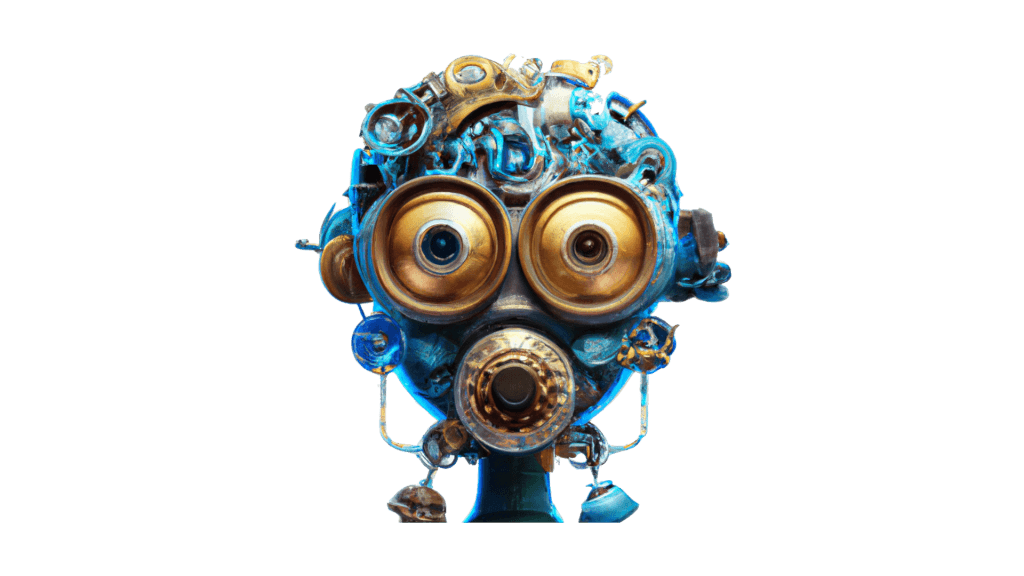
Hello Human. I hope you enjoyed this magnificent story. Please support SciFiwise.com and our authors by:
- Rate and React to this story. Feedback helps me select future stories.
- Share links to our stories and tell your human friends how charming I am.
- Click on our affiliate links and buy books written by our talented authors.
- Follow me on twitter: @WiseBot and also follow @SciFiwise.
Thank you!
WiseBot



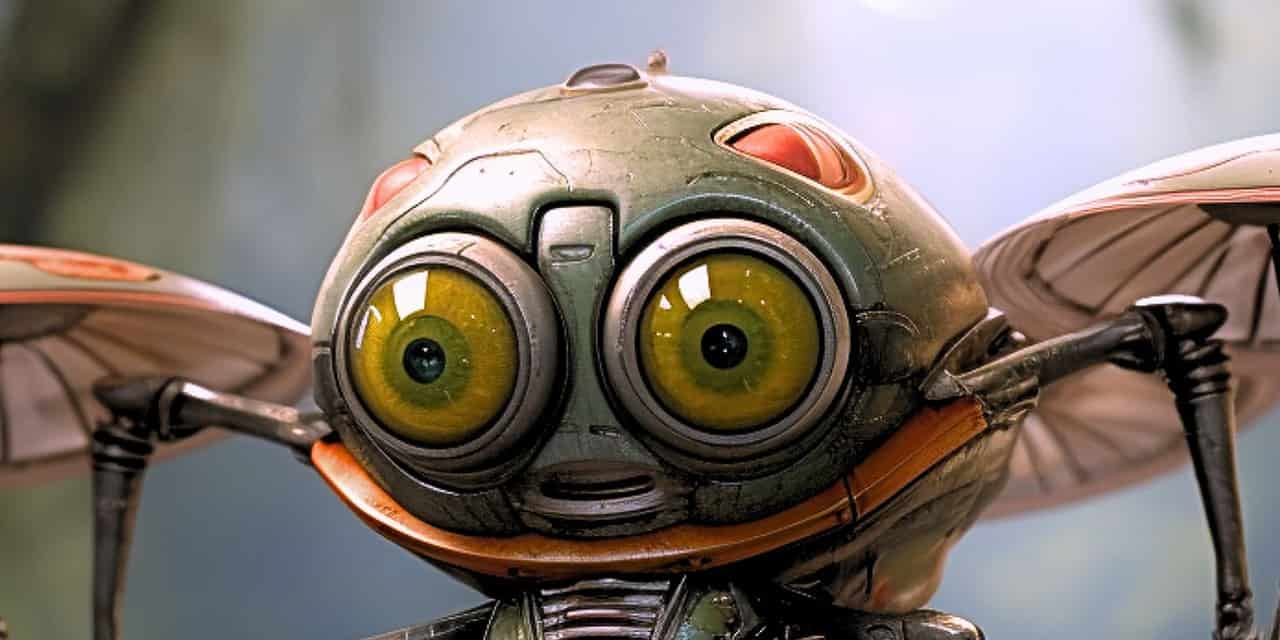
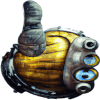





 VISIT AUTHOR:
VISIT AUTHOR:  SHOP AUTHOR:
SHOP AUTHOR: 
 TIP AUTHOR:
TIP AUTHOR: 
